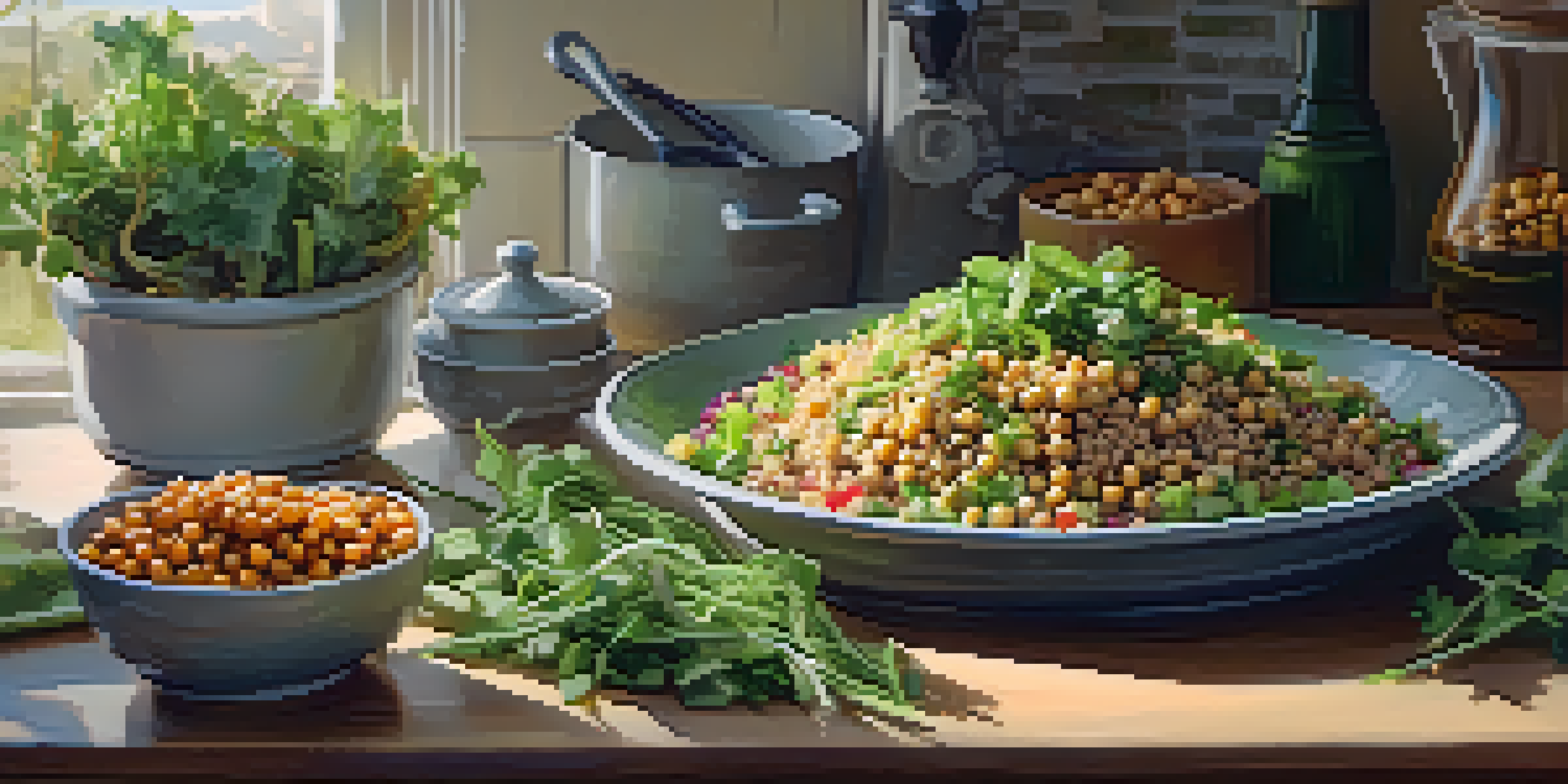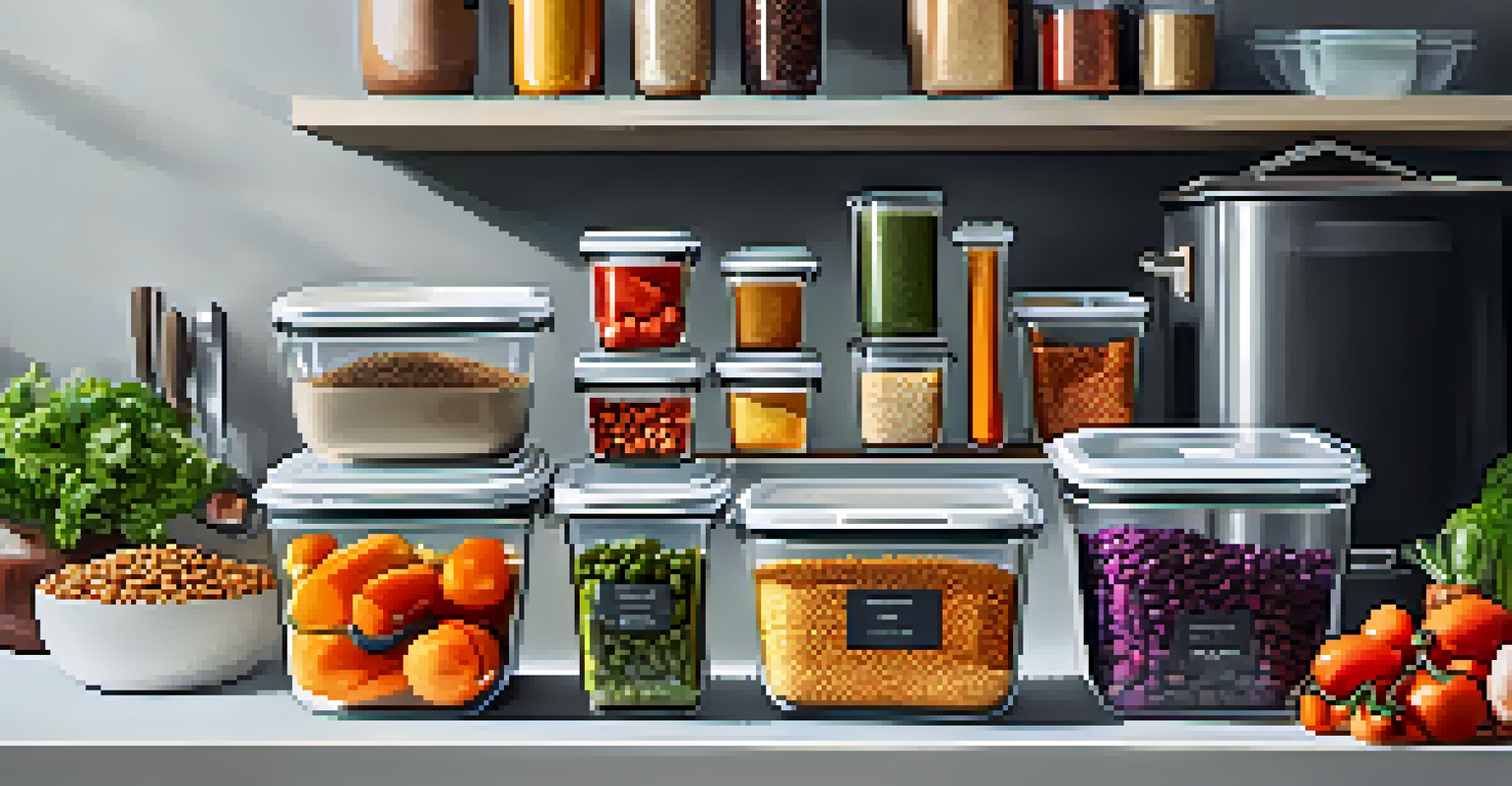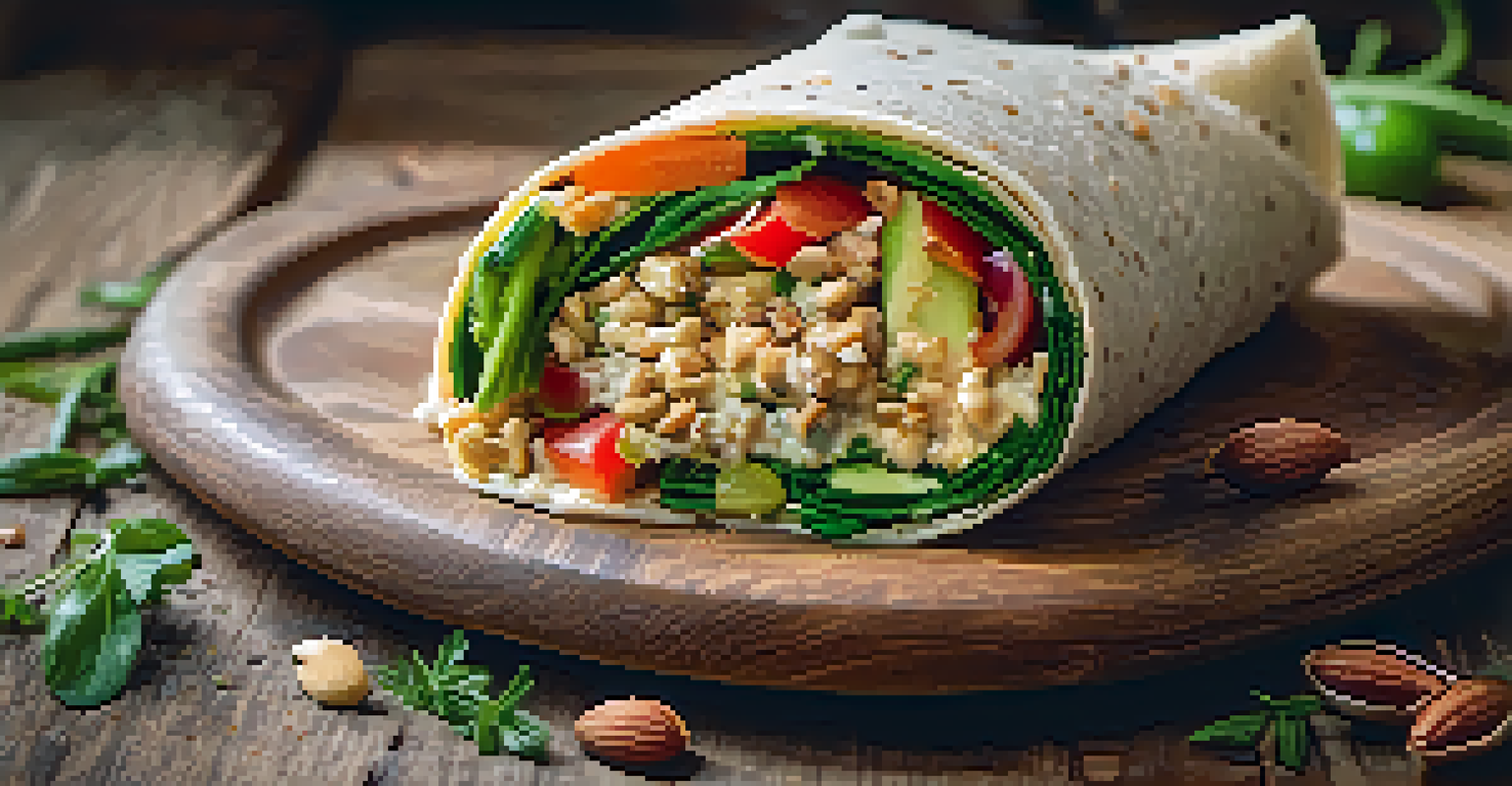How to Cook Vegan for One: Portion Control Made Easy

Understanding Portion Control for Vegan Cooking
Portion control is crucial when cooking for one, especially with vegan meals. It helps you manage your diet, reduce food waste, and save money. By understanding portion sizes, you can create balanced meals without overeating or feeling deprived.
The food you eat can be either the safest and most powerful form of medicine or the slowest form of poison.
A common mistake is cooking too much food, leading to leftovers that might go uneaten. Instead, aim to prepare exactly what you need. This not only keeps meals fresh but also allows you to experiment with new recipes without feeling overwhelmed.
Investing in a kitchen scale or measuring cups can make a world of difference. By weighing out grains, legumes, and vegetables, you can easily adjust recipes to fit your needs. This way, cooking vegan for one becomes less daunting and more enjoyable.
Choosing Versatile Ingredients for Single Portions
Opt for versatile ingredients that can be used in multiple meals. For example, quinoa is not only a great base for salads but also works well in soups and stir-fries. This flexibility allows you to mix and match without buying excessive ingredients.

Frozen vegetables and fruits are excellent options for cooking for one. They last longer than fresh produce, reducing waste, and can be easily portioned out. Just a handful can add color, nutrition, and flavor to your meals without the risk of spoilage.
Master Portion Control for Vegan Meals
Understanding portion sizes helps manage your diet, reduces food waste, and saves money when cooking vegan for one.
Don’t forget about pantry staples like beans, lentils, and rice. They are nutrient-dense and can be cooked in batches. This way, you can whip up a quick meal while ensuring you have healthy options ready to go.
Meal Prepping: Your Secret to Easy Vegan Cooking
Meal prepping can be a game changer for cooking vegan for one. By dedicating a few hours each week to prepare ingredients and meals in advance, you simplify your cooking process. This means less time in the kitchen during the week and more time enjoying your meals.
Cooked with love, food is a celebration of life. It brings joy and nourishment to our bodies.
Start by cooking grains and proteins in bulk, then portion them out into single servings. This way, you can easily combine them with fresh vegetables or sauces for a quick meal. You’ll find that having prepped ingredients makes it easier to stay on track with your diet.
Additionally, consider using jars or containers for easy storage. Label each portion with the date and contents, so you can keep track of what you have. This not only helps in managing portions but also adds a fun and colorful touch to your fridge.
Creating Balanced Vegan Meals for One
A balanced meal typically includes a source of protein, healthy fats, and carbohydrates. When cooking for one, aim to incorporate a variety of food groups to ensure you're getting all the nutrients you need. For instance, a quinoa salad with chickpeas, avocado, and mixed greens makes a perfect single-serving meal.
Don’t shy away from experimenting with spices and herbs. They can elevate a simple dish and make it feel gourmet. A dash of cumin or a sprinkle of fresh basil can turn a basic stir-fry into a flavorful delight.
Embrace Versatile Ingredients
Choosing flexible ingredients like quinoa and frozen vegetables allows for diverse meals without excess waste.
Remember, balance doesn’t just apply to nutrition but also to flavors and textures. Mix crunchy vegetables with creamy dressings or chewy grains to create a satisfying meal. This makes your cooking experience more enjoyable and keeps your palate excited.
Utilizing Leftovers Smartly in Vegan Cooking
Leftovers can be a blessing when cooking for one. Instead of letting them go to waste, think creatively about how to repurpose them into new meals. For example, leftover roasted veggies can easily become a hearty vegetable soup or a filling wrap.
Consider batch cooking items like soups or stews that can be frozen in single portions. This way, you’ll always have a quick meal on hand for those busy days. Just reheat and enjoy—no extra cooking required.
Another fun idea is to use leftovers in breakfast dishes. Leftover grains or roasted vegetables can be tossed into a scramble or blended into a smoothie. This not only saves time but also helps reduce food waste.
Quick and Easy Vegan Recipes for One
When it comes to cooking vegan for one, simplicity is often key. Quick recipes that require minimal ingredients can save you time and effort. Think one-pot meals like a simple vegan chili or a stir-fried rice dish loaded with your favorite veggies.
Another idea is to embrace the power of salads. A hearty salad with beans, grains, and a variety of colorful veggies can be filling and nutritious. Just toss everything together with a tasty dressing, and you’re good to go.
Utilize Leftovers Creatively
Repurposing leftovers not only minimizes waste but also inspires new meal ideas, making cooking for one more enjoyable.
Don’t forget about the versatility of wraps and sandwiches. They allow you to combine different ingredients effortlessly. A whole grain wrap filled with hummus, fresh vegetables, and a sprinkle of nuts makes for a satisfying and quick meal.
Shopping Tips for Cooking Vegan for One
When shopping for one, it’s important to tailor your grocery list to avoid overbuying. Make a list of versatile ingredients you frequently use, and stick to it. This not only saves money but also ensures you have the essentials on hand for quick meals.
Consider shopping in bulk for items you know you'll use regularly, like grains or canned beans. This can often be more economical. Just be mindful of expiration dates and plan your meals around these items to ensure you use them up.

Lastly, don’t hesitate to explore local farmer’s markets or community-supported agriculture (CSA) options. They often offer fresh, seasonal produce that can inspire new vegan meals. Plus, supporting local businesses is always a win!